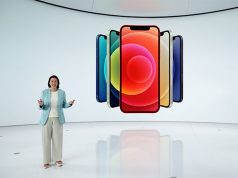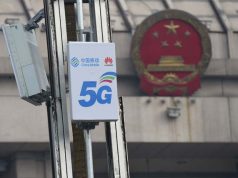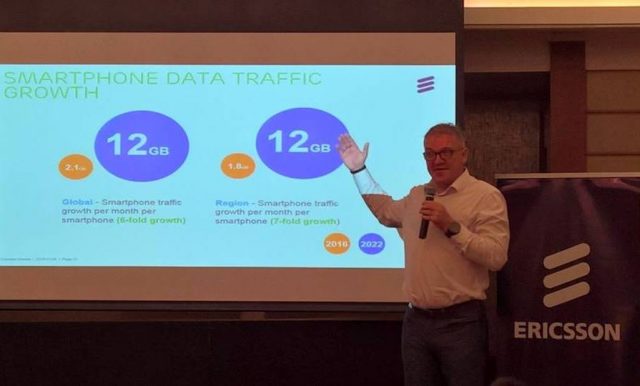
MANILA, PHILIPPINES | In the latest edition of its Mobility Report, Swedish telecom company Ericsson revealed that mobile broadband subscriptions continue to surge across South East Asia and Oceania. In fact, the report predicts an 1100% growth in total mobile data traffic in the Asia Pacific region by 2022.
By the end of 2017, around 50 percent of all mobile subscriptions in the region will be associated with smartphones, and will reach 70 percent in the next five years.
Early deployments of 5G will translate into an estimated 28 million 5G subscriptions by 2022. New spectrum availability and the development of innovative use cases should help accelerate the deployment of 5G services across South East Asia and Oceania.
5G refers to the super-fast, next-generation mobile internet technology that can potentially replace the current 4G as the new standard in mobile communications. It is scheduled to be launched this year by AT&T, Verizon Wireless, and other international carriers .
The same 2017 mobility report from Ericsson predicts that by 2022, there will be 28 million 5G subscriptions and 180 million cellular IoT subscriptions in the region.
The number of cellular IoT subscriptions in South East Asia and Oceania is also projected to increase by more than four-fold between 2016 and 2022, reaching around 180 million by the end of the period.
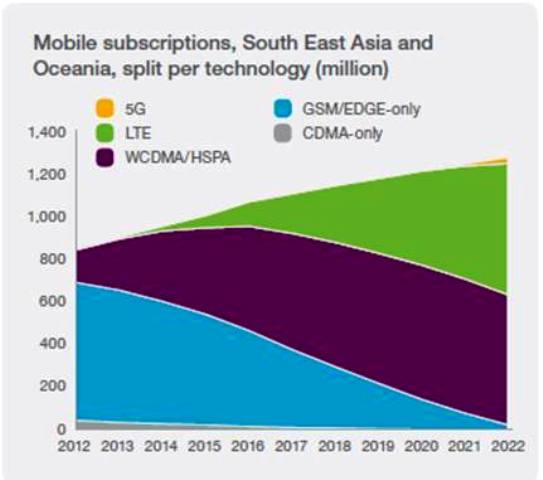
IoT, the Internet of Things, is the interconnection of any device from cellphones, coffee makers, and washing machines to machine components and digital hardware to the Internet so they can “communicate” with each other.
By 2010, cellular will be the technology connecting most long-range IoT devices. This will facilitate the digital transformation of industries, and provide mobile operators in the region with opportunities to take on different roles in the IoT value chain.
Revenue potential in the Philippines, arising from industry digitalization is greatest in energy and utilities, public safety, and manufacturing.
“In the Philippines, subscription was at 10% in 2016 and that will surge to 70% by 2020 which will be bigger than what we see across the region in general, and even bigger than the global space,” said Sean Gowran, president and country manager for Ericsson Philippines and Pacific Islands. “We are bullish about the Philippine market.”
In the next five years, it is predicted that 5G will be able to deliver the desired high throughput and low latency to cover a wide range of online services and provide significant value to people, society and industries.
This will stimulate uptake for usage of local apps by developing new ones, which could help drive mobile broadband growth.
“Our analysis of mobile broadband app coverage shows that the Philippines has improved year-on-year, with the probability of a user achieving the minimum required network speed for web browsing improving by 19%. Video streaming improved 40% year on year while High Definition Video streaming improved 53%,” Gowran said.
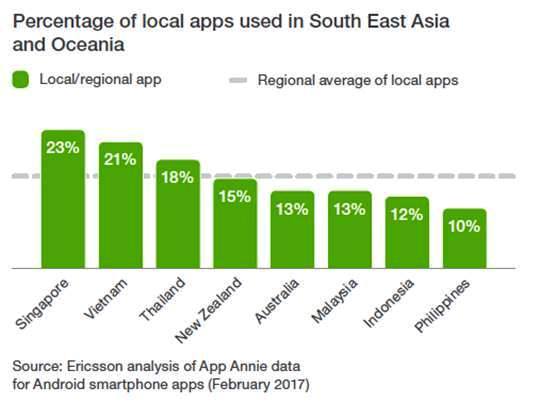
Other insights from the Mobility Report
Enabling internet for all. The most cost-efficient way to bring more people online is to leverage existing mobile network infrastructure and the main challenges in connecting the unconnected are primarily related to affordability literacy, and provision of relevant services – rather than the availability of technology.
Network optimization through analytics. Advanced analytics speed up improvements of network quality and user experience by providing operators with effective tools to not only react adequately to ever increasing consumer expectations of network quality, but also to augment networks in anticipation of rising data demands.
Massive IoT coverage in the city. A wide range of Internet of Things (IoT) services are being embraced in cities. Simulation of a realistic large-scale IoT service scenario in a city showed that up to 99 percent of devices located deep indoors could be reached with new cellular technologies for the IoT.
Remote operation of vehicles with 5G. Driverless buses on city streets will be common in the near future. A key step towards introducing autonomously driven buses in the public transport system is the development of remote monitoring and control capabilities, which will help to ensure safety.








